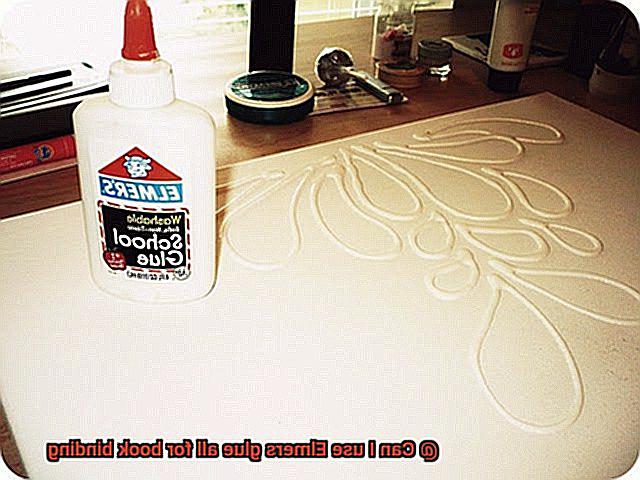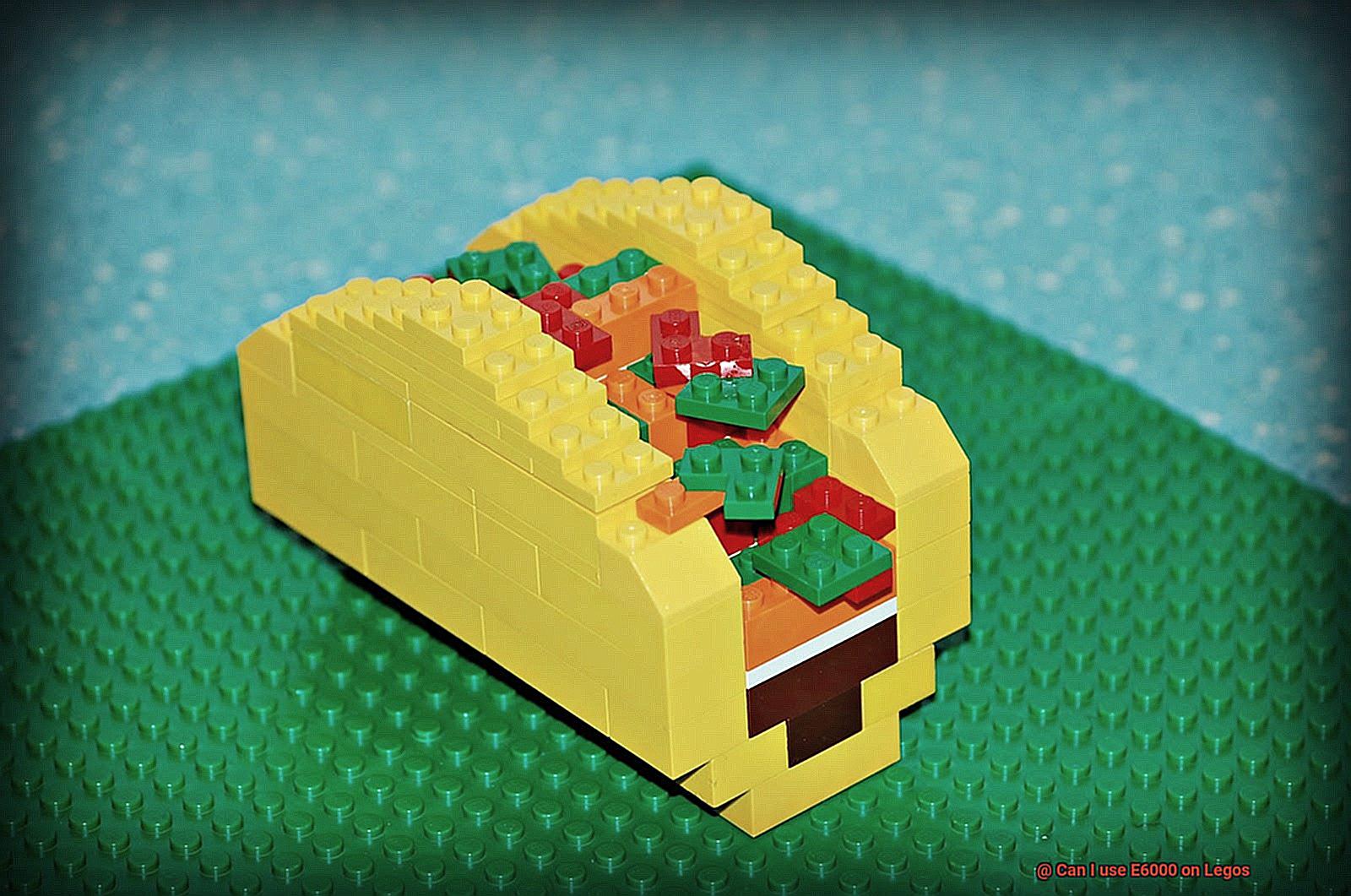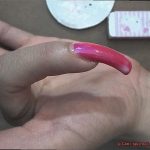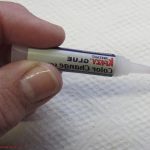Bookbinding is an art form that demands precision and the right choice of materials. When it comes to picking an adhesive, one popular option that might catch your eye is good ol’ Elmer’s Glue All. You know, the stuff you’ve seen in your kid’s craft drawer? But before you dive headfirst into your bookbinding project, let’s take a moment to consider the pros and cons of using this household glue.
In this blog post, we’re going to explore whether Elmer’s Glue All is a crafty solution or a sticky mess for your bookbinding adventures. From its versatility to its potential pitfalls, we’ll delve into the nitty-gritty of using this glue for binding books.
So, buckle up and let’s get started.
What is Elmer’s Glue-All?
Contents
- 1 What is Elmer’s Glue-All?
- 2 What to Consider Before Using Elmer’s Glue-All for Bookbinding
- 3 Durability of Elmer’s Glue-All
- 4 pH Level of Elmer’s Glue-All
- 5 Consistency of Elmer’s Glue-All
- 6 Alternatives to Elmer’s Glue-All for Bookbinding
- 7 Benefits of Using Specialized Bookbinding Adhesives
- 8 Conclusion
Look no further than Elmer’s Glue-All. This trusted adhesive has been a go-to choice for generations of DIY enthusiasts, artists, and students. Let’s dive into the world of Elmer’s Glue-All and discover why it is a must-have in every craft corner.
The Magic of Elmer’s Glue-All:
Elmer’s Glue-All is a white, water-based adhesive that dries clear. Its magical formula, crafted from synthetic polymers, water, and specialized additives, ensures strong bonding properties while remaining non-toxic and safe for children. Whether you’re working on school projects or engaging in creative crafts, Elmer’s Glue-All is the perfect companion.
Unleash Your Creativity:
One of the best things about Elmer’s Glue-All is its versatility. This adhesive can bond a wide range of materials together, including paper, fabric, wood, ceramics, and more. From art masterpieces to repairing cherished items, Elmer’s Glue-All provides reliable adhesion for any project.
Fast Drying Time:

Say goodbye to waiting impatiently for glue to dry. Elmer’s Glue-All boasts a relatively fast drying time, allowing you to proceed with your project without delay. No more tapping fingers anxiously – this glue lets you admire your finished masterpiece in no time.
No Visible Residue:
Elmer’s Glue-All dries clear, ensuring that your hard work shines through without any unsightly marks or residue. Your beautiful creations deserve to be showcased flawlessly, and Elmer’s Glue-All seamlessly blends into your project for a polished finish.
Available Sizes and Easy Accessibility:
Elmer’s Glue-All comes in various sizes to cater to different project needs. Whether you require a small bottle for individual use or a larger container for bigger projects, finding the perfect size is a breeze. Craft stores and online retailers stock this versatile adhesive, ensuring its accessibility to everyone.
What to Consider Before Using Elmer’s Glue-All for Bookbinding
Before you reach for that trusty bottle of Elmer’s Glue-All, there are a few things you should know. While Elmer’s Glue-All is a versatile adhesive for various projects, it may not be the best choice for bookbinding. In this article, we’ll explore the considerations you should keep in mind before using Elmer’s Glue-All for your bookbinding endeavors.
Paper and Material Compatibility:
Elmer’s Glue-All is a water-based adhesive that dries clear, making it suitable for many applications. However, when it comes to bookbinding, certain papers, like delicate or porous ones, may not react well to this glue. The water content in Elmer’s Glue-All can cause warping or discoloration on sensitive papers. It’s important to test it on a small sample before committing to your entire project to ensure compatibility.
Durability and Longevity:
Books are meant to be treasured and withstand the test of time. Unfortunately, Elmer’s Glue-All may not have the same strength and durability as specialized bookbinding adhesives. Over time, the glue may lose its adhesive properties, leading to loose pages or a weakened binding.
To ensure the longevity of your handmade books, consider using a stronger adhesive specifically designed for bookbinding.
Flexibility:
Books need to open and close without the glue cracking or breaking. Elmer’s Glue-All may lack the necessary flexibility to withstand repeated use and movement. Its rigid nature can potentially cause damage to your handmade books over time. Opting for a more flexible adhesive designed for bookbinding will help preserve the integrity of your books.
pH Neutrality:
If you’re working with valuable or archival books, it’s crucial to consider the pH level of the adhesive. Elmer’s Glue-All is not pH-neutral and can harm sensitive papers or materials over time. Acidic adhesives can cause yellowing, discoloration, or deterioration of the paper. For preservation purposes, it’s recommended to use acid-free adhesives specifically designed for bookbinding.
Drying Time:
Elmer’s Glue-All may take longer to dry, depending on the thickness of the application and environmental conditions. Handling the book before the glue is completely set can result in smudging or damage. Patience is key when using Elmer’s Glue-All for bookbinding projects. Consider using a faster-drying adhesive or allowing ample drying time before handling the book.
Durability of Elmer’s Glue-All

When it comes to bookbinding, durability is of paramount importance. You want your books to withstand the passage of time, with pages securely bound and adhesive that remains intact and resilient. Therefore, it is essential to carefully consider the adhesive you choose for your bookbinding projects.
Elmer’s Glue-All, a widely used adhesive for crafts and DIY endeavors, belongs to the family of polyvinyl acetate (PVA) glues. PVA glues are renowned for their strong bonding properties, making them suitable for a diverse range of applications. However, when it comes to bookbinding, there are valid concerns regarding the long-term durability of Elmer’s Glue-All.
One notable issue is the potential brittleness that can develop in PVA glues over time, particularly in environments with fluctuating temperature and humidity conditions. This brittleness may cause the glue to crack or break, compromising the integrity of the bookbinding. Imagine opening your cherished book only to find loose pages and fractured glue marks on the spine.
Another point of concern is the flexibility of the adhesive. Books need to endure repeated opening and closing without the adhesive deteriorating or separating from the pages. Some bookbinding experts argue that Elmer’s Glue-All may not withstand this kind of stress over an extended period.
Additionally, PVA glues like Elmer’s Glue-All may not exhibit the same level of moisture resistance as other bookbinding adhesives, such as animal-based glues or specialty bookbinding glues. Moisture can cause PVA glues to soften or lose their adhesive properties, potentially leading to pages detaching from the binding. This is certainly undesirable, especially if you plan on creating books that will be exposed to varying environmental conditions.
It is important to note that while some bookbinders have achieved success using Elmer’s Glue-All for specific projects, it may not be recommended for high-quality or long-lasting bindings. If you are undertaking a special project or desire the utmost durability for your bound books, it is worth exploring other adhesive options specifically formulated for bookbinding.
pH Level of Elmer’s Glue-All
Elmer’s Glue-All is a versatile adhesive that weaves its way into countless crafting and household projects. However, for bookbinding enthusiasts, understanding the pH level of this glue is paramount to preserve the integrity and longevity of their creations. In this article, we delve into the acidity of Elmer’s Glue-All and its potential impact on paper over time.
The pH Level of Elmer’s Glue-All:
- Ingredients: Elmer’s Glue-All predominantly comprises polyvinyl acetate (PVA), a synthetic polymer renowned for its adhesive prowess.
- pH Range: PVA-based glues, including Elmer’s Glue-All, typically boast a mildly acidic pH level, ranging from approximately 4 to 6.
- Low Acidity: The acid content in Elmer’s Glue-All is relatively low, rendering it generally safe for most paper or bookbinding materials.
Effects on Paper:
- Long-Term Degradation: Acidic substances gradually erode paper over time, leading to yellowing, brittleness, and deterioration.
- Precautions for Delicate Materials: To shield valuable or delicate papers from harm’s way, certain precautions are advised.
- Use Neutral or Alkaline Paper: Opt for acid-free or archival-quality papers with a neutral pH level to counteract degradation.
- Apply Glue Sparingly and Evenly: Excessive glue application can heighten acidity levels in specific areas, resulting in localized damage.
- Acid-Free Paper and Elmer’s Glue-All: Employing acid-free paper in conjunction with Elmer’s Glue-All diminishes the potential long-term repercussions of acidity on paper.
- Consultation with Professionals: For books or documents of immense value or irreplaceability, consulting a professional bookbinder or preservation specialist is highly recommended to select suitable adhesives.
Consistency of Elmer’s Glue-All
Today, we embark on a quest to unlock the secrets of Elmer’s Glue-All and discover its remarkable consistency that makes it a go-to adhesive for bookbinding projects. So, grab your imagination and let’s set off on this creative adventure.
The Consistency Conundrum:
Imagine a white, viscous elixir with a smooth and even texture – that’s Elmer’s Glue-All. This magical adhesive flows like poetry, making it a breeze to work with. Its viscosity strikes the perfect balance between thickness and spreadability, ensuring your bookbinding projects are a joy from start to finish.
The Art of Drying:
As we dive deeper into the world of bookbinding, aesthetics become our guiding star. Fear not, for Elmer’s Glue-All dries clear, leaving no trace of its presence. Its invisible transformation allows your beloved creations to shine without any unsightly residue.
However, keep in mind that as the glue dries, its consistency may undergo a slight metamorphosis, becoming stiffer or more rigid due to the evaporation of water content. But fret not. This transformation only adds to the durability and reliability of your bindings.
Flexibility is Key:
Imagine opening a beautifully bound book, only to hear the dreaded crack of pages breaking free. Fear not, brave binder.
Elmer’s Glue-All understands the importance of flexibility in bookbinding projects. Its versatile consistency allows for a strong bond between paper and other materials like cardboard or fabric.
This ensures that your bindings can withstand repeated openings and closings without cracking or breaking, preserving your treasured tales for generations to come.
Application Mastery:
Now that we’ve armed ourselves with knowledge about Elmer’s Glue-All, let’s dive into the art of proper application. To craft bindings that will stand the test of time, apply an even layer of this enchanting adhesive on the spine or edges of your pages.
This meticulous technique ensures a solid bond and prevents pages from coming loose over time. With the right application know-how, your books will remain intact, guarding stories and knowledge within their lovingly bound pages.
Alternatives to Elmer’s Glue-All for Bookbinding
There are several alternatives that may be better suited for this purpose. Let’s explore some of these options and their advantages and disadvantages.
One alternative to Elmer’s Glue-All is PVA (polyvinyl acetate) glue. PVA glue is widely used in the bookbinding industry due to its strong adhesive properties and flexibility when dried. It creates a durable bond between the pages and the cover of a book, making it suitable for both paperback and hardcover bindings. The only downside is that it can sometimes leave a slight yellow tint on lighter papers.
Methyl cellulose glue, also known as bookbinder’s glue, is another excellent alternative. This water-soluble adhesive becomes gel-like when mixed with water. It has excellent archival qualities, which means it will not yellow or deteriorate over time. Methyl cellulose glue is often preferred for delicate or valuable books, as it can be easily removed without causing damage to the pages. However, it does require some skill in mixing and application.
Epoxy resin is a two-part adhesive that provides an incredibly strong bond. It is commonly used for heavy-duty applications and can withstand extreme temperatures and moisture. However, epoxy resin may not be suitable for all types of books, especially those that require flexibility or easy page-turning.
For those who prefer traditional methods, animal-based glues such as hide glue or bone glue are still used by some bookbinders. These adhesives have been used in bookbinding for centuries and offer certain advantages like reversibility and compatibility with older books. However, they require more specialized knowledge and preparation compared to modern synthetic adhesives.
When considering alternatives to Elmer’s Glue-All for bookbinding projects, it’s important to consider factors such as cost, durability, ease of use, and environmental impact. PVA glue and methyl cellulose glue are generally affordable and easy to use, with the latter offering superior archival qualities. Epoxy resin provides unmatched strength but may not be suitable for all applications. Animal-based glues offer tradition and compatibility with older books but require more expertise.
Benefits of Using Specialized Bookbinding Adhesives
Then specialized bookbinding adhesives are your secret weapon. These adhesives are specifically formulated to provide a range of benefits that regular glue simply can’t match. Let’s dive into the reasons why using specialized bookbinding adhesives is a game-changer:
- Permanent bond: Say goodbye to loose pages and covers. Specialized bookbinding adhesives create a strong and permanent bond that can withstand the test of time. Your beloved books will stay intact even with frequent use.
- Excellent flexibility: Books are meant to be opened and closed repeatedly, and specialized bookbinding adhesives understand that. They offer exceptional flexibility, ensuring that the adhesive can handle this repetitive motion without cracking or becoming brittle. Your books will remain intact, no matter how many times you read them.
- Longer open time: Have you ever struggled to position pages and covers accurately before the adhesive sets? With specialized bookbinding adhesives, you don’t have to rush. They have a longer open time, giving you more flexibility and time to get everything just right. No more stress or hasty decisions.
- pH neutral: Acidic or alkaline adhesives can wreak havoc on paper over time, leading to yellowing or even disintegration of the pages. Specialized bookbinding adhesives are pH neutral, ensuring that your books remain in pristine condition for years to come. Preserve the beauty of your books without worrying about deterioration.
- Reversibility: Sometimes, repairs or modifications are necessary for your treasured books. Specialized bookbinding adhesives come to the rescue with their reversibility feature. Soften or remove the adhesive without damaging the pages or covers. Your books can always undergo changes while maintaining their original charm.
- Various options: Specialized bookbinding adhesives offer versatility with their different forms – liquid, paste, or tape. This variety allows you to choose the most suitable adhesive for your specific project requirements. Whether you’re binding paperbacks or hardcovers, there’s an adhesive that’s perfect for you. Embrace your creativity and bring your bookbinding visions to life.
cvCQv0cHBWY” >
Conclusion
In conclusion, although Elmer’s Glue-All is a versatile adhesive suitable for numerous crafts and DIY projects, it may not be the optimal choice for bookbinding endeavors. Before reaching for that familiar orange bottle, several critical factors warrant consideration: paper and material compatibility, durability and longevity, flexibility, pH neutrality, and drying time.
Delicate or porous papers may react unfavorably to Elmer’s Glue-All, potentially resulting in unsightly warping or discoloration. Moreover, this adhesive may lack the necessary strength and flexibility to withstand the rigors of repeated use and movement.
Over time, loose pages or a weakened binding could spell disaster. Additionally, it’s important to note that Elmer’s Glue-All is not pH-neutral, which means it could harm sensitive papers or materials in the long run.
While there have been instances where bookbinders achieved success using Elmer’s Glue-All for specific projects, it may not be the most prudent option for high-quality or long-lasting bindings. If you seek an alternative adhesive specifically formulated for bookbinding purposes, an array of options awaits your exploration: PVA glue, methyl cellulose glue, epoxy resin—the list goes on. You might even consider animal-based glues like hide glue or bone glue.
Specialized bookbinding adhesives offer distinct advantages such as a permanent bond that withstands the test of time with unwavering resilience. Their excellent flexibility ensures your bound books can weather countless page turns without faltering.
Moreover, these adhesives boast a longer open time—allowing you to position pages with precision before they set—and are pH-neutral to safeguard paper quality over the years. Should repairs or modifications become necessary down the line (as they often do), specialized adhesives offer reversibility without inflicting damage upon precious pages or covers. And let us not forget their diverse forms: liquid, paste, or tape—take your pick.
Ultimately, when tackling bookbinding projects demanding durability and longevity, it is wise to explore specialized adhesives tailored explicitly for this purpose.






